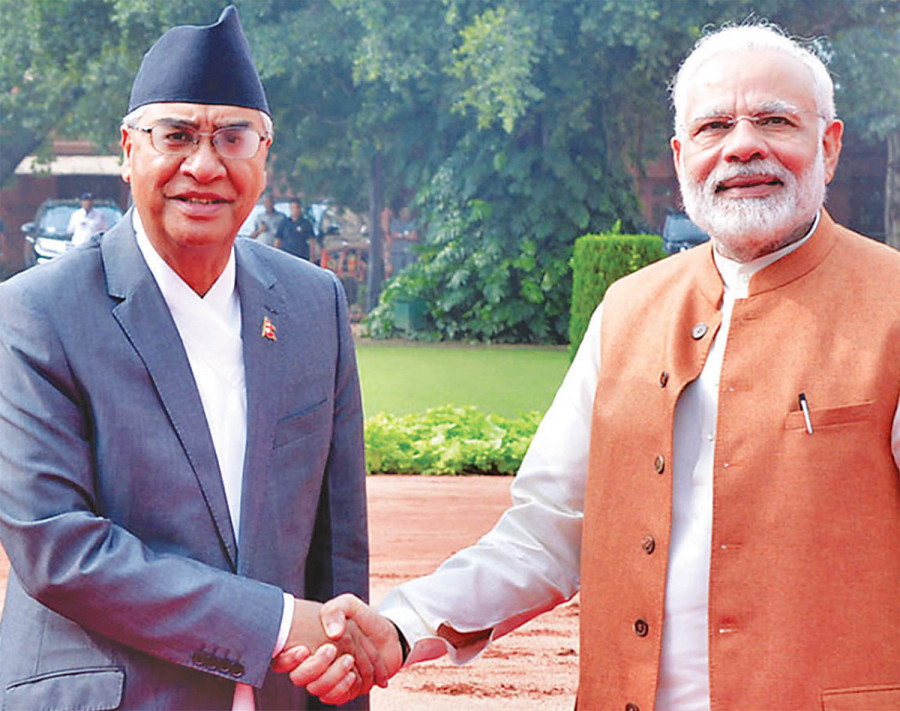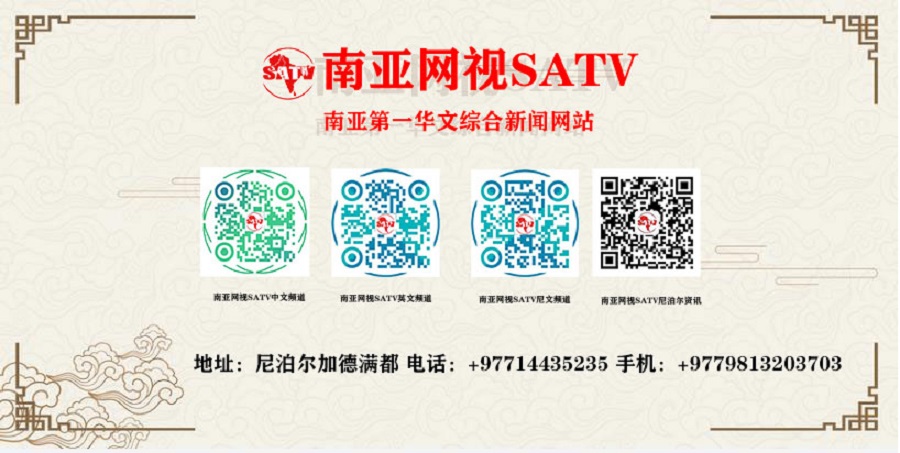
This will be Modi’s fifth visit to Nepal since 2014 when he was first elected prime minister. File Photo
Just ahead of the scheduled visit of Indian Prime Minister Narendra Modi to Lumbini on the occasion of Buddha Jayanti, India has proposed Navin Srivastava, a China hand at the South Block, as its new Nepal ambassador.
One and a half months after Prime Minister Sher Bahadur Deuba’s visit to India, Modi is scheduled to visit Lumbini on May 16 to attend a function being organised to mark Buddha Jayanti, officials from Nepal and India confirmed to the Post.
An official announcement is yet to be made though.
Officials also confirmed that Srivastva will replace Vinay Mohan Kwatra at Lainchaur. Kwatra has already assumed office as Indian foreign secretary after returning from Kathmandu as India’s ambassador.
“We received the agrément for Srivastava this week and it is in the process of formalisation,” a senior Nepal government official told the Post on Tuesday.
After Nepal’s approval of the agrément, the government of India will announce the appointment of Srivastava in place of Kwatra.
Srivastava, a 1993 batch Indian Foreign Service officer, had earlier served as India’s ambassador to the Kingdom of Cambodia and was Consul General of India in Shanghai.
Currently, Srivastava is an additional secretary at India’s Ministry of External Affairs and heads the crucial East-Asia Division that looks after matters relating to China, Democratic People’s Republic of Korea, Japan, Mongolia and Republic of Korea, according to the website of India’s Ministry of External Affairs.
Officials at the Ministry of Foreign Affairs said that Nepal will respond “soon” to India’s proposal of Srivastava as its ambassador as Modi’s scheduled visit is less than two weeks away.
Both sides have started the groundwork for Modi’s visit and sent high-level delegations to Lumbini to discuss arrangements.
A Nepali team led by Chief of Protocol Durga Bahadur Subedi and security officials from various departments have already visited Lumbini and discussed various aspects of the visit with the Indian side, and local authorities, according to a senior security official.
As of now, as per indications from India, Modi will be arriving just for a daylong visit.
The Hindu newspaper reported on Tuesday that Modi will take a helicopter from Kushinagar to Lumbini.
“After worshipping in Lumbini, he will address a gathering entitled ‘Buddha Memorial Ceremony’ and lay the foundation of the Buddhist Monastery to be built with Indian assistance,” the paper reported.
If time does not permit Modi to visit Kathmandu for a stopover, Prime Minister Deuba and other ministers will welcome and meet Modi in Lumbini on that day, said officials.
Prime Minister Deuba will be travelling to Bhairahawa near Lumbini on the same day to inaugurate the Gautam Buddha International Airport.
As per the report in the Hindu, two prime ministers will take part in the lamp-lighting ceremony at the Mayadevi temple and officials from both sides have already conducted a reconnaissance of the arrangements for the visit. “Modi will fly from Delhi to the recently inaugurated Kushinagar International airport, and then fly by helicopter to Lumbini, which is a short distance from the India-Nepal border,” the newspaper reported.
This will be Modi’s fifth visit to Nepal since 2014 when he was first elected as prime minister and first to Lumbini. Modi in the past visits to Nepal had expressed his desire to see Lumbini.
The visit this time will be first by Modi since his re-election in 2019.
Nepal and India saw bilateral ties reaching their nadir a year after Modi’s first visit to Kathmandu following Delhi’s decision to impose a border blockade that caused shortages of fuel, medicines and other essential items.
CPN-UML’s KP Sharma Oli then ran the 2017 election campaign ratcheting up ultranationalist, or anti-India, rhetoric.
Oli was voted to power. During Oli’s tenure as prime minister, ties hit a new low again following his remarks that the Indian virus was more lethal than the Chinese and Italian and if India subscribed to the physical aspect of the Indian national emblem—the Lion capital of Ashoka—“simhameva jayate” or “satyameva jayate”, and his government’s decision to publish a new national map showing the Kalapani area within the Nepali territory.
Bilateral ties now, however, have appeared to be back on track, which was evident also by Delhi’s rollout of the red carpet for Deuba last month.
Officials said Deuba had extended an invitation to Modi during his visit to Delhi. Efforts will be made to make Modi visit Kathmandu also when he comes to Lumbini, according to officials.
Modi’s trip to Nepal this time comes amid rapid geopolitical shifts, with Nepal recently caught between the US-China rivalry over the Millennium Challenge Corporation compact. Beijing had explicitly warned Nepal against accepting the $500 million US grant. A month after Nepal ratified the grant agreement, Beijing sent its Foreign Minister Wang Yi to Kathmandu. During his visit, Wang pushed for some projects under the Belt and Road Initiative in Nepal, but Kathmandu conveyed that it was not keen on taking commercial loans.
Following the Indian blockade, Nepal’s tilt towards the north had alarmed Delhi, as it wondered if it was losing its sphere of influence, as Beijing was making inroads in the South Asian region.
Observers say Modi’s visit to Lumbini appears to be the realisation of his earlier desire to offer worship at the Mayadevi Temple, but the recent turn of events do make it strategic.
Srivastava, the proposed Delhi’s ambassador to Kathmandu, is considered a strong China hand, and most importantly, as per the Indian media, after Galwan skirmishes between the Indian and Chinese troops in May 2020, he was the point person from the Indian diplomatic side at the Corps Commander-level meeting with the Chinese side.
India and China have set up different mechanisms to sort out the decades-old boundary dispute and as the in-charge of the East-Asia division, Srivastava was also leading the Working Mechanism for Consultation and Coordination for Border Affairs (WMCC) with China after the India-China boundary dispute and crisis in eastern Ladakh.
Srivastava, currently handling the East Asia desk at the Ministry of External Affairs, is the man who has been an integral part of India-China military commanders meeting to defuse the situation in East Ladakh after Chinese PLA transgressed across the Line of Actual Control (LAC) in May 2020, according to the Hindustan Times.
After Kwatra was named as new Indian foreign secretary, Kumar Tuhin, director-general at the Indian Council for Cultural Relations, Santosh Jha, Indian ambassador to Belgium, Luxembourg, and the European Union; and Abhay Thakur, additional secretary at the Ministry of External Affairs, were said to be the possible names for Kathmandu.
Similarly, Pranay Verma, Indian ambassador to Vietnam who earlier headed the East Asia Division at the Ministry of External Affairs, was also seen as Kwatra’s possible successor.
“Given the Chinese Communist Party's influence on Nepali polity through power and pelf, Srivastava will have a tough time countering the narrative from Beijing with the Himalayan republic playing on both sides for optimum advantage,” the Hindustan Times wrote outlining the challenges for the new Delhi envoy.
“However, the Chinese grip on Kathmandu has loosened after the appointment of Sher Bahadur Deuba as prime minister and the split within the Maoist-Communist movement in the Himalayan Republic during the time when Vinay Kwatra was ambassador to Nepal.
The proposed visit of Modi to Lumbini has strong cultural affiliation which Modi is using as soft power diplomacy, said Durgeshman Singh, former Nepali ambassador to India.
And that’s good for both countries, according to him.
“Culture brings people closer and the visit will add value to public life and society. Once we come closer, then it will contribute to sorting out issues and differences between the two countries,” said Singh, who served as Nepal’s ambassador to India from April 2008 to September, 2009. “Modi is playing a long-term card by visiting Lumbini.”













